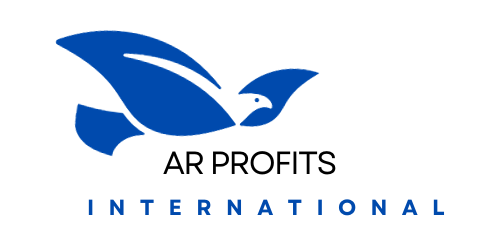The Means to Create Websites and Landing Pages: A Comprehensive Guide
Post Disclaimer
*We may earn a commission for purchases made using our links. Please see our disclaimer to learn more.*
Introduction
In today’s digital age, having a strong online presence is essential for businesses and individuals alike. Websites and landing pages serve as the cornerstone of online marketing efforts, allowing you to showcase your products, services, or personal brand to a global audience. In this comprehensive guide, I’ll walk you through the process of creating websites and landing pages, covering everything from selecting hosting providers and domain names to designing effective content and integrating email marketing.
1. Understanding Hosting Providers
Choosing the right hosting provider is crucial for ensuring your website’s reliability, speed and security. Popular hosting providers like Namecheap, Bluehost, SiteGround and HostGator offer a range of features such as 24/7 customer support, uptime guarantees and easy scalability. Consider factors like server location, bandwidth, number of hosted domains and storage space when selecting a hosting provider that meets your needs.
The best hosting providers 2024 are HOSTINGER, United Domains, Bluehost, HostGator, Dreamhost, Namecheap, STRATO.
2. Choosing the Right Domain Name
Your domain name is your online identity, so it’s important to choose wisely. Aim for a domain name that is memorable, easy to spell and relevant to your brand or niche. Avoid long or complex domain names and consider using keywords that reflect your website’s content or purpose. Register your domain name through a reputable registrar like GoDaddy or Namecheap.
3. Exploring Website Building Tools
Website building platforms like WordPress, Wix, and Squarespace make it easy for anyone to create a professional-looking website without needing coding skills. WordPress, in particular, offers flexibility, customization options, and a vast ecosystem of plugins and themes. Evaluate your technical expertise and desired level of customization when choosing a website building tool that suits your needs.
The best website building tools 2024 are: WIX, Webador, IONOS, STRATO, JIMDO, Shopify, Hostinger, WordPress, SITE123, SQUARESPACE.
4. Setting Up a WordPress creating websites and landing pages
Setting up a WordPress website is straightforward, even for beginners. Most hosting providers offer one-click WordPress installation, allowing you to get started quickly. Once installed, you can customize your website with themes and plugins to enhance its appearance and functionality. Take advantage of WordPress’s user-friendly interface and extensive documentation to build a website that reflects your unique style and brand identity.
5. Designing Effective Landing Pages
Landing pages are simply structured sites, most of them consist of 1 page only, with a form to enter name and E-mail-address. They are designed to convert visitors into leads or customers by focusing on a specific offer or call-to-action. When designing landing phages, prioritize simplicity, clarity and relevance. Use attention-grabbing headlines, persuasive copy and compelling visuals to engage visitors and encourage them to take action. Test different elements of your landing pages to optimize conversions over time.
6. Integrating Email Marketing
Email marketing is a powerful tool for nurturing leads and driving sales. Choose an email marketing service provider like Mailchimp, GetResponse or ConvertKit to manage your email campaigns effectively. Integrate email opt-in forms on your website and landing pages to capture visitor information and build your email list. Create valuable content and personalized email sequences to engage subscribers and drive conversions. THE MONEY IS IN THE LIST!
7. Creating Compelling Content creating websites and landing pages
Content is king in the online world, so it’s essential to create high-quality, engaging content that resonates with your audience. Whether it’s blog posts, videos or infographics, focus on providing value and solving your audience’s problems. Conduct keyword research to identify topics that are relevant to your audience and optimize your content for search engines to attract organic traffic.
8. Optimizing for SEO
Search engine optimization (SEO) is critical for improving your website’s visibility and attracting organic traffic. Optimize your website and content for relevant keywords, meta tags and headings to improve your chances of ranking higher in search engine results. Build quality backlinks from reputable websites and regularly update your content to keep it fresh and relevant.
9. Leveraging Social Media
Social media platforms offer a valuable opportunity to connect with your audience, promote your content and drive traffic to your website. Choose the right social media platforms for your target audience and engage with them regularly by sharing valuable content, participating in conversations and building relationships. Use social media advertising to reach a wider audience and amplify your marketing efforts. Create your accounts on Pinterest, Facebook, Instagram, LinkedIn, Twitter and TikTok. If you use videos, create your own YouTube Channel. Create an account for each website or product you promote.
10. Monitoring and Analyzing Performanceame
Tracking and analyzing website performance metrics is essential for evaluating the effectiveness of your marketing efforts and making data-driven decisions. Use tools like Google Analytics to monitor website traffic, user behavior, and conversion rates. Analyze the data to identify areas for improvement and optimize your marketing strategies accordingly.
Conclusion
Creating websites and landing pages is a fundamental step in establishing a strong online presence and driving business growth. By following the steps outlined in this guide, you can create compelling websites and landing pages that attract visitors, engage them effectively and convert them into loyal customers. Remember to stay updated on industry trends and best practices to ensure continued success in your online marketing endeavors.
FAQs:
1. How do I choose the best hosting provider for my website?
- Consider factors such as uptime reliability, server speed, customer support quality, pricing, scalability and security features.
- Read reviews and compare hosting providers based on your specific needs and budget.
- Look for hosting providers that offer user-friendly interfaces, one-click installations for popular platforms like WordPress and robust support options.
2. Is it necessary to have a custom domain name for my website?
- While it’s not strictly necessary, having a custom domain name can significantly enhance your brand’s credibility and professionalism.
- A custom domain name makes it easier for visitors to remember and find your website, compared to using a generic subdomain provided by a hosting platform.
- Additionally, a custom domain name allows you to build brand recognition and establish a unique online identity.
3. Which website building platform is best for beginners?
- WordPress is often recommended for beginners due to its user-friendly interface, extensive documentation and vast ecosystem of themes and plugins.
- Other beginner-friendly website building platforms include Wix, Squarespace and Weebly, which offer intuitive drag-and-drop editors and pre-designed templates.
- Choose a platform that aligns with your technical skills, customization needs, and budget.
4. What are some essential elements of a high-converting landing page?
- Attention-grabbing headline: Clearly communicate the value proposition or offer to capture visitors’ interest.
- Compelling call-to-action (CTA): Encourage visitors to take the desired action, whether it’s making a purchase, signing up for a newsletter or downloading a resource.
- Clean and intuitive design: Ensure that the layout is visually appealing, easy to navigate, and optimized for both desktop and mobile devices.
- Persuasive copy: Use persuasive language and compelling storytelling to communicate the benefits of your offer and address visitors’ pain points.
- Relevant visuals: Incorporate relevant images, videos, or graphics to enhance the overall appeal and effectiveness of the landing page.
5. How can I measure the success of my email marketing campaigns?
- Track key metrics such as open rates, click-through rates, conversion rates, and unsubscribe rates to gauge the performance of your email campaigns.
- Monitor engagement metrics like email forwards, social shares, and replies to assess the level of audience interaction and interest.
- Use email marketing analytics tools provided by your email service provider to gain insights into subscriber behavior and campaign performance.
- Conduct A/B testing to experiment with different email elements (subject lines, CTAs, content formats) and optimize your campaigns for better results.




